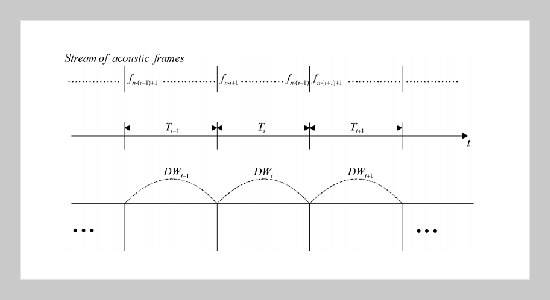REFERENCES
- [1] Clavel, C., Ehrette, T. and Richard, G., “Event Detection for an Audio-Based Surveillance System,” Proceedings of IEEE International Conference on Multimedia and Expo, pp. 1306�1309 (2005).
- [2] Harma, A., McKinney, M. F. and Skowronek, J., “Automatic Surveillance of the Acoustic Activity in Our Living Environment,” Proceedings of IEEE International Conference on Multimedia and Expo, pp. 634� 637 (2005).
- [3] Besacier, L., Dufaux, A., Ansorge, M. and Pellandini, F., “Automatic Sound Recognition Relying on Statistical Methods, with Application to Telesurveillance,” Proceedings of International Workshop on Intelligent Communication Technologies and Applications, with Emphasis on Mobile Communications, pp. 116�120 (1999).
- [4] Atrey, P. K., Maddage, N. C. and Kankanhalli, M. S., “Audio Based Event Detection for Multimedia Surveillance,” Proceedings of IEEE International Conference on Acoustics, Speech and Signal Processing, pp. 813�816 (2006).
- [5] Evans, R. J., Brassington, E. L. and Stennett, C., “Video Motion Processing for Event Detection and Other Applications,” Proceedings of International Conference on Visual Information Engineering, pp. 93�96 (2003).
- [6] Albiol, A., Sandoval, C., Naranjo, V. and Mossi, J. M., “Robust Motion Detector for Video Surveillance Applications,” Proceedings of International Conference on Image Processing, Vol. 3, pp. II-379�382 (2003).
- [7] Amano, T., Hiura, S., Yamaguti, A. and Inokuchi, S., “Eigen Space Approach for a Pose Detection with Range Images,” Proceedings of International Conference on Pattern Recognition, pp. 622�626 (1996).
- [8] DuPont, E. M., Yu, H. and .Roberts, R. G., “Object Pose Detection in the Presence of Background Clutter and Occlusion,” Proceedings of the Thirty-Sixth Southeastern Symposium on System Theory, pp. 446�450 (2004).
- [9] Lu, L., Jiang, H. and Zhang, H. J., “A Robust Audio Classification and Segmentation Method,” Proceedings of the 9th ACM International Conference on Multimedia, pp. 203�211 (2001).
- [10] Lu, L., Li, S. Z. and Zhang, H. J., “Content-Based Audio Segmentation Using Support Vector Machines,” Proceedings of IEEE International Conference on Multimedia and Expo, pp. 956�959 (2001).
- [11] Li, S. Z., “Content-Based Audio Classification and Retrieval Using the Nearest Feature Line Method,” IEEE Transactions on Speech and Audio Processing, Vo1. 8, pp. 619�625 (2000).
- [12] Markel, J. D. and Gray, A. H., Linear Prediction of Speech, Springer-Verlag, New York (1976).
- [13] Rabiner, L. and Juang, B. H., Fundamentals of Speech Recognition, Prentice Hall, New Jersey (1993).
- [14] Dempster, A. P., Laird, N. M. and Rubin, D. B., “Maximum Likelihood from Incomplete Data via the EM Algorithm,” Journal of the Royal Statistical Society, Vol. 39, pp. 1�38 (1977).
- [15] Linde, Y., Buzo, A. and Gray, R. M., “An Algorithm for Vector Quantizer Design,” IEEE Transactions on Communications, Vol. 28, pp. 84�95 (1980).
- [16] Fraley, C. and Raftery, A. E., “How Many Clusters? Which Clustering Method? Answers via Model Based Cluster Analysis,” The Computer Journal, Vol. 41, pp. 578�588 (1998).
- [17] Yager, R. and Filev, D., Essentials of fuzzy modeling and control, Wiley, New York (1994).
- [18] Takagi, T. and Sugeno, M., “Fuzzy Identification of Systems and Its Applications to Modeling and Control,” IEEE Transactions on System, Man, and Cybernetics, Vol. 15, pp. 116�132 (1985).
- [19] Yen, J., Langari, R. and Zadeh, L. A. (eds.), Industrial applications of fuzzy logic and intelligent systems, IEEE Press, New York (1995).
















